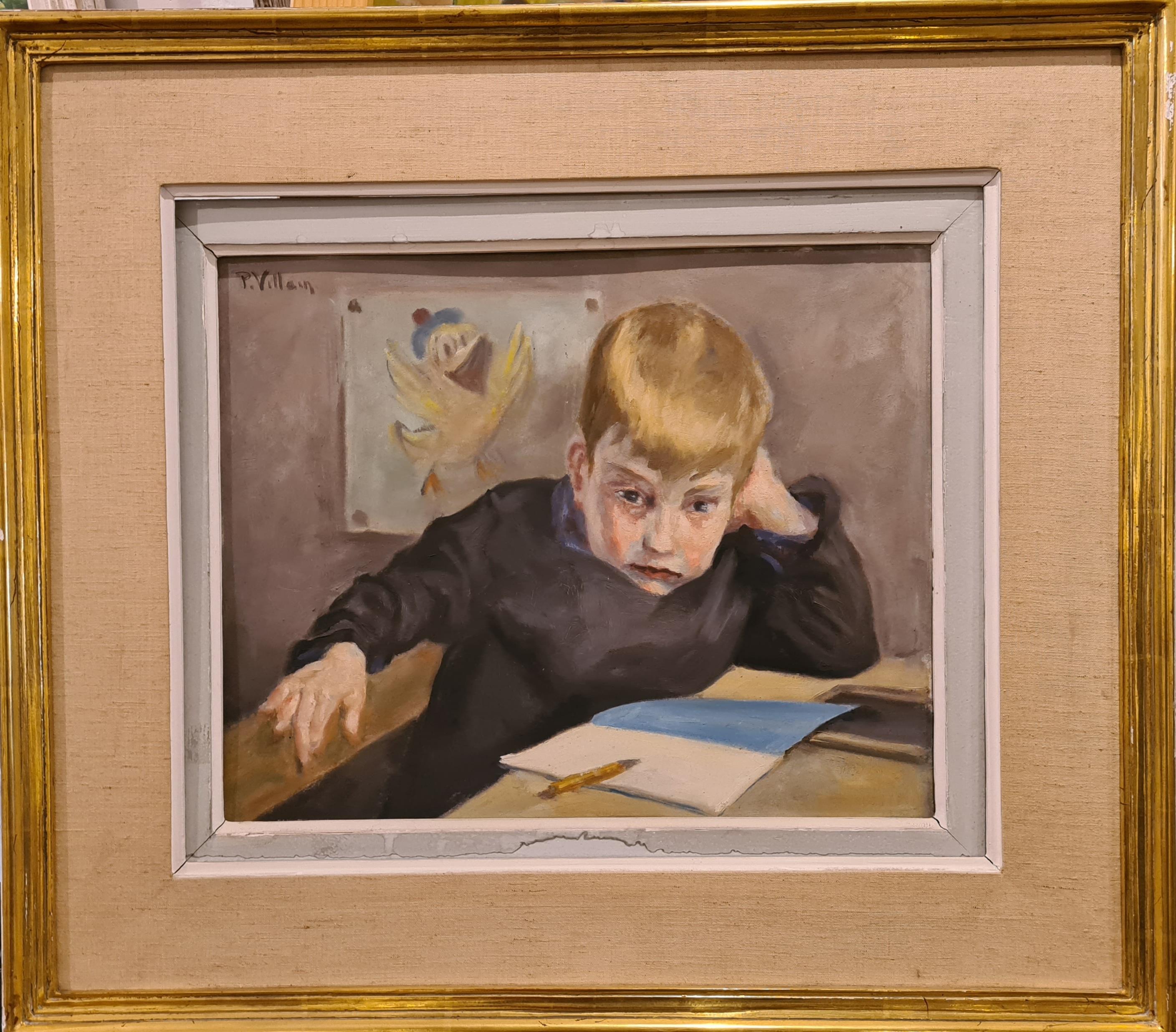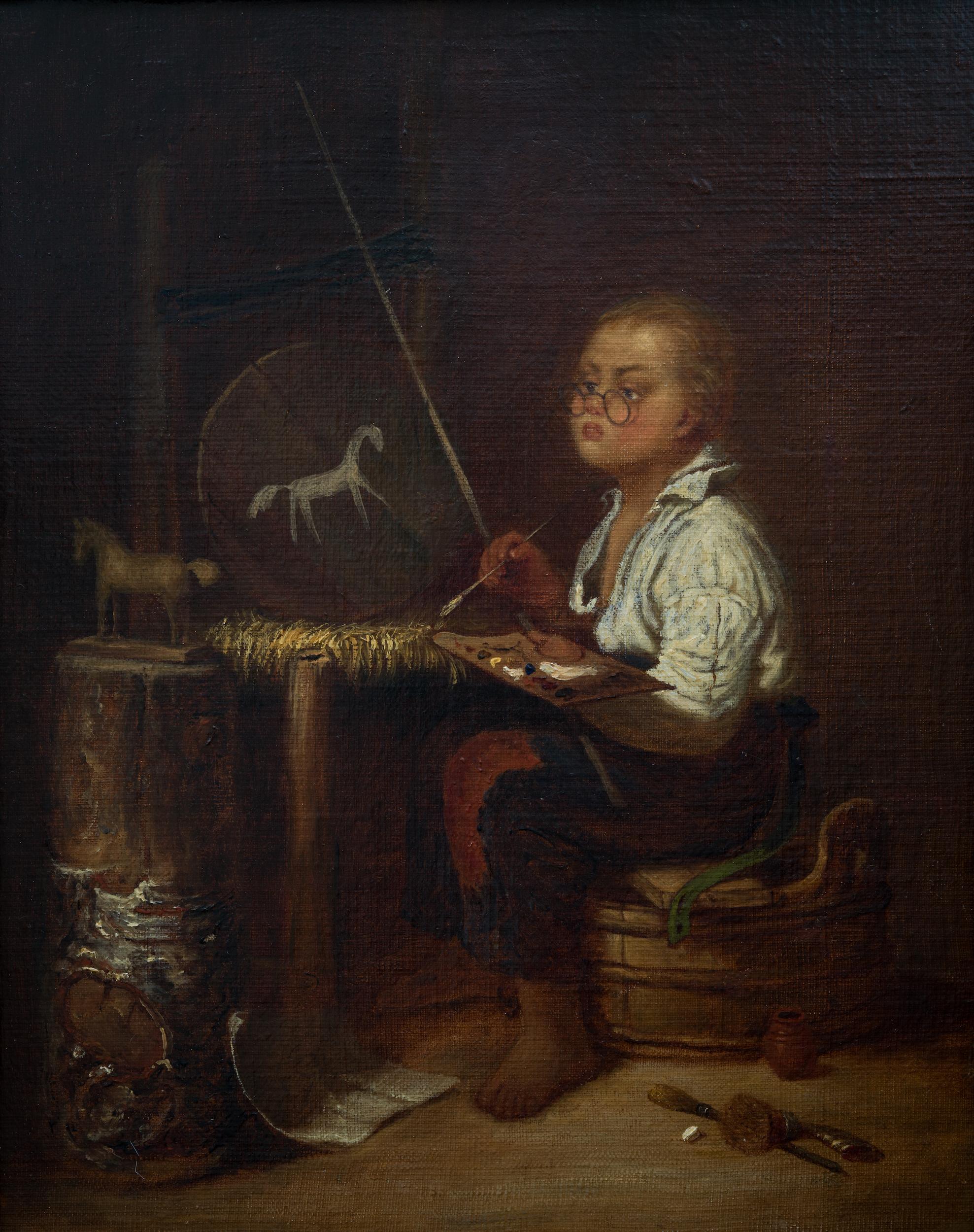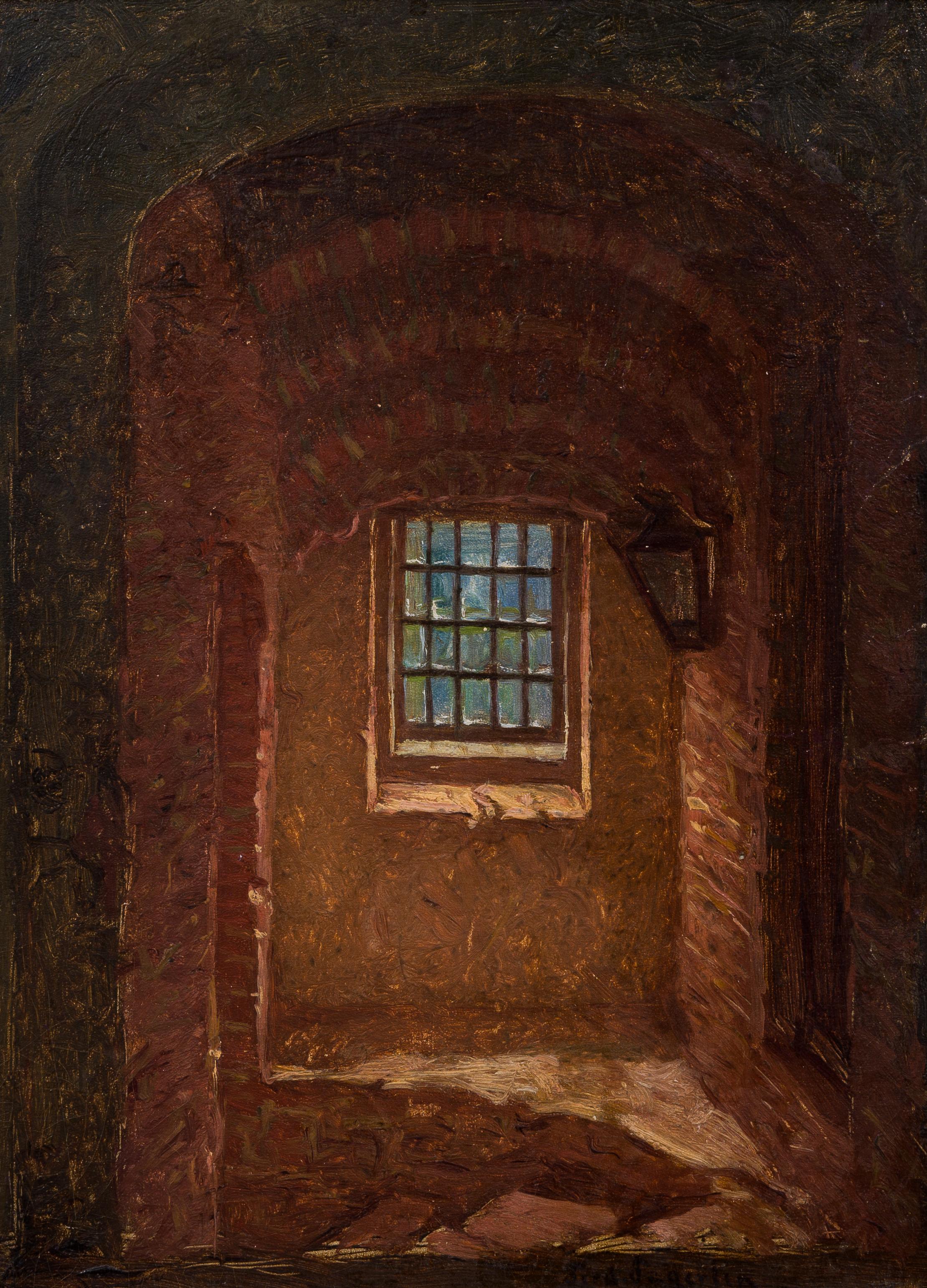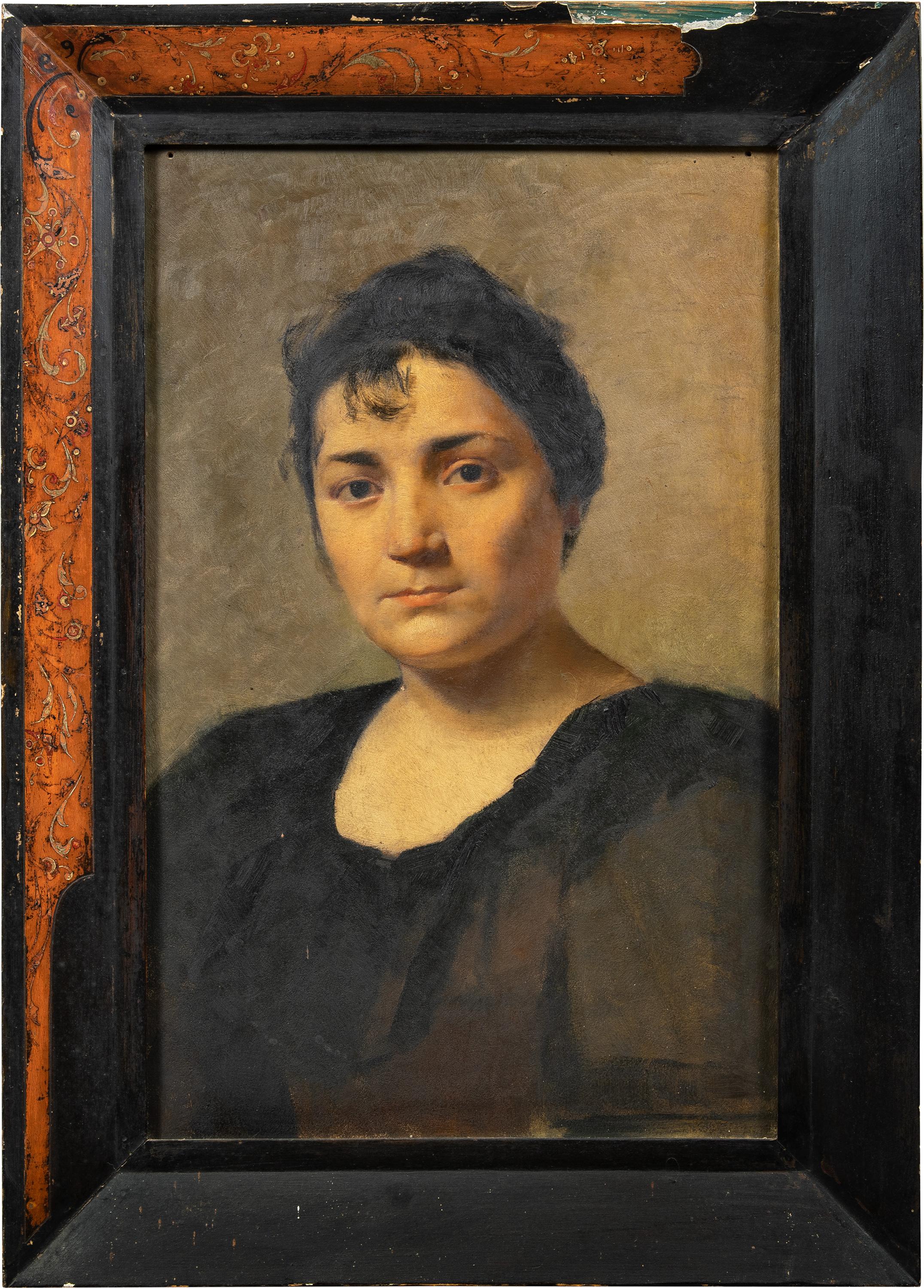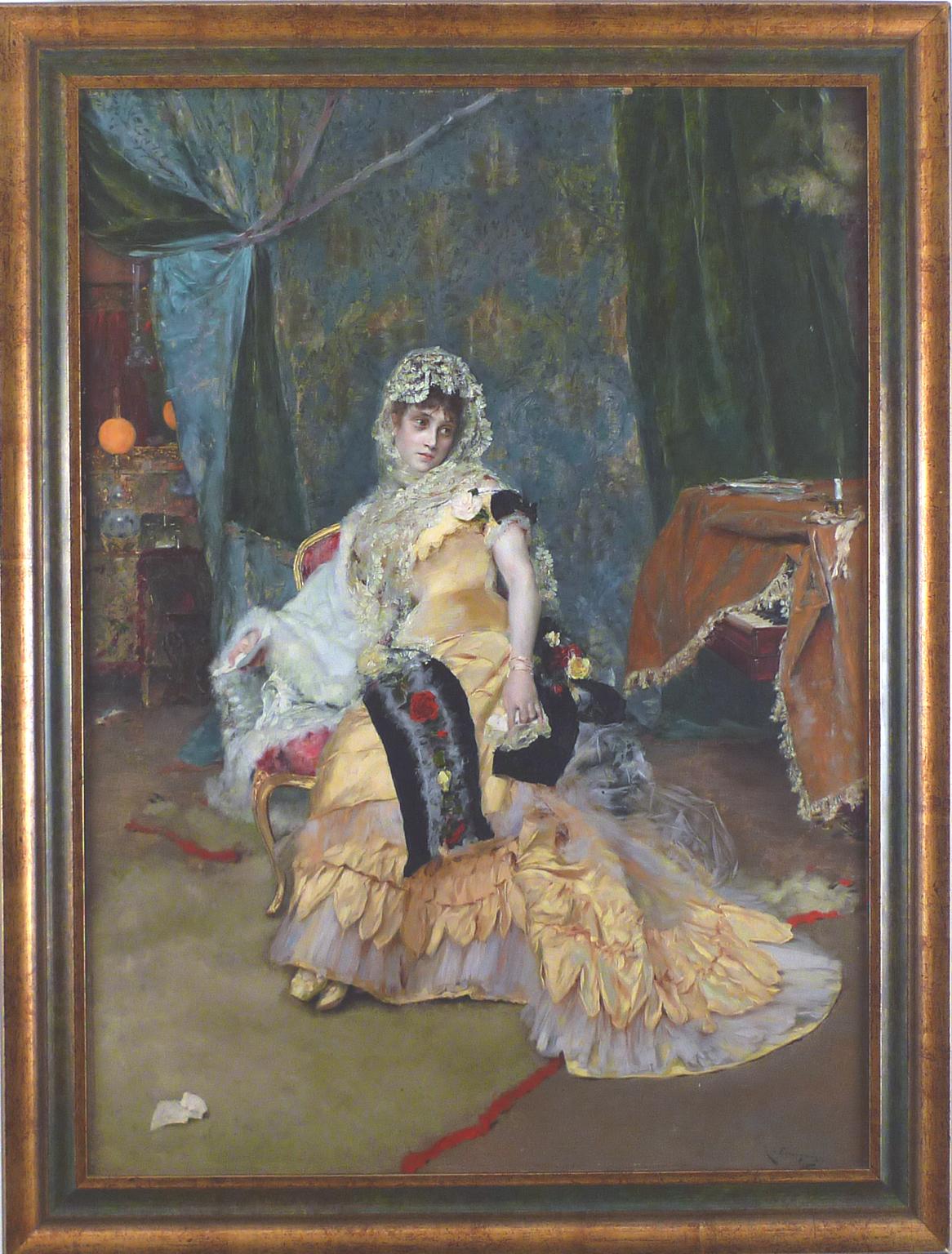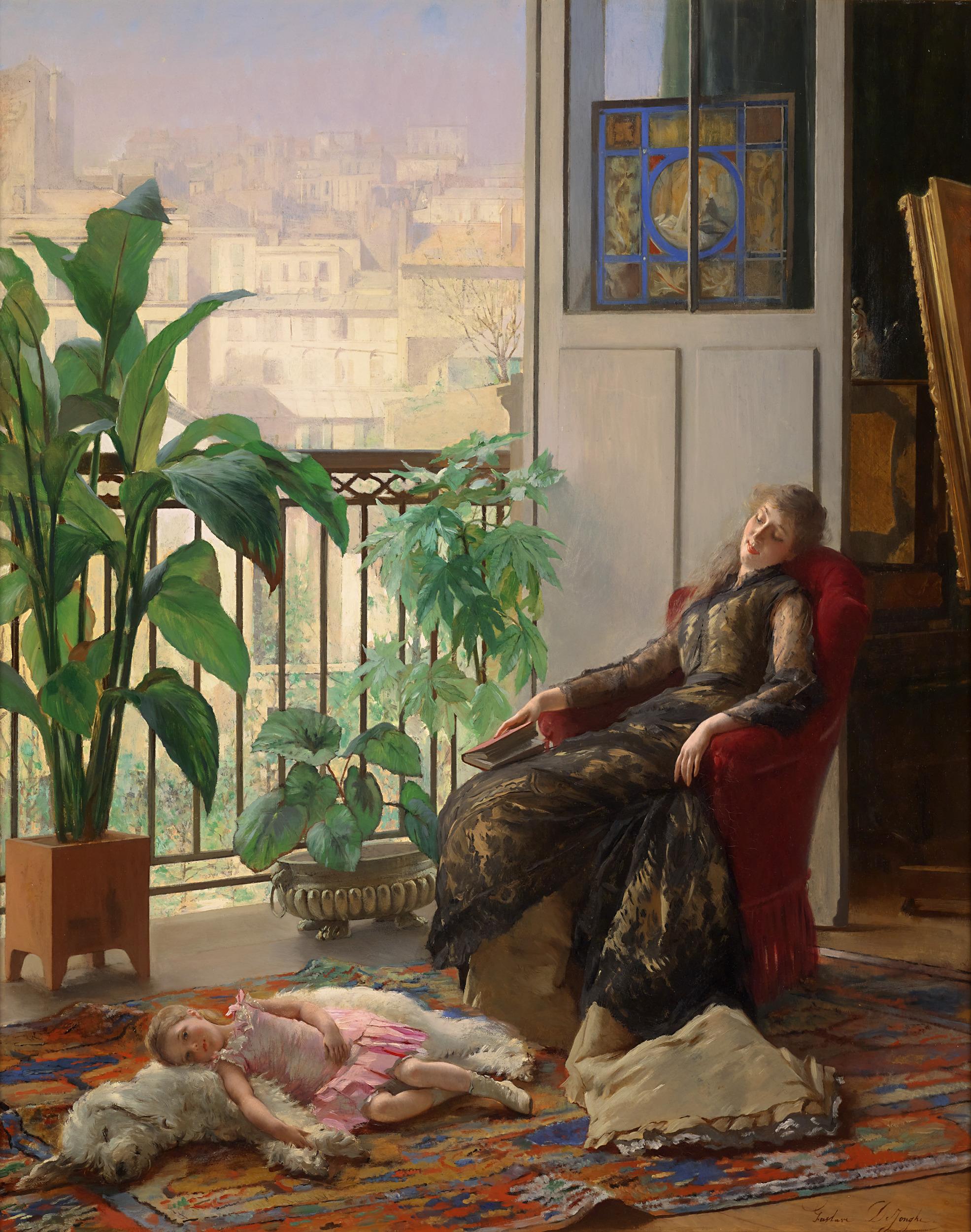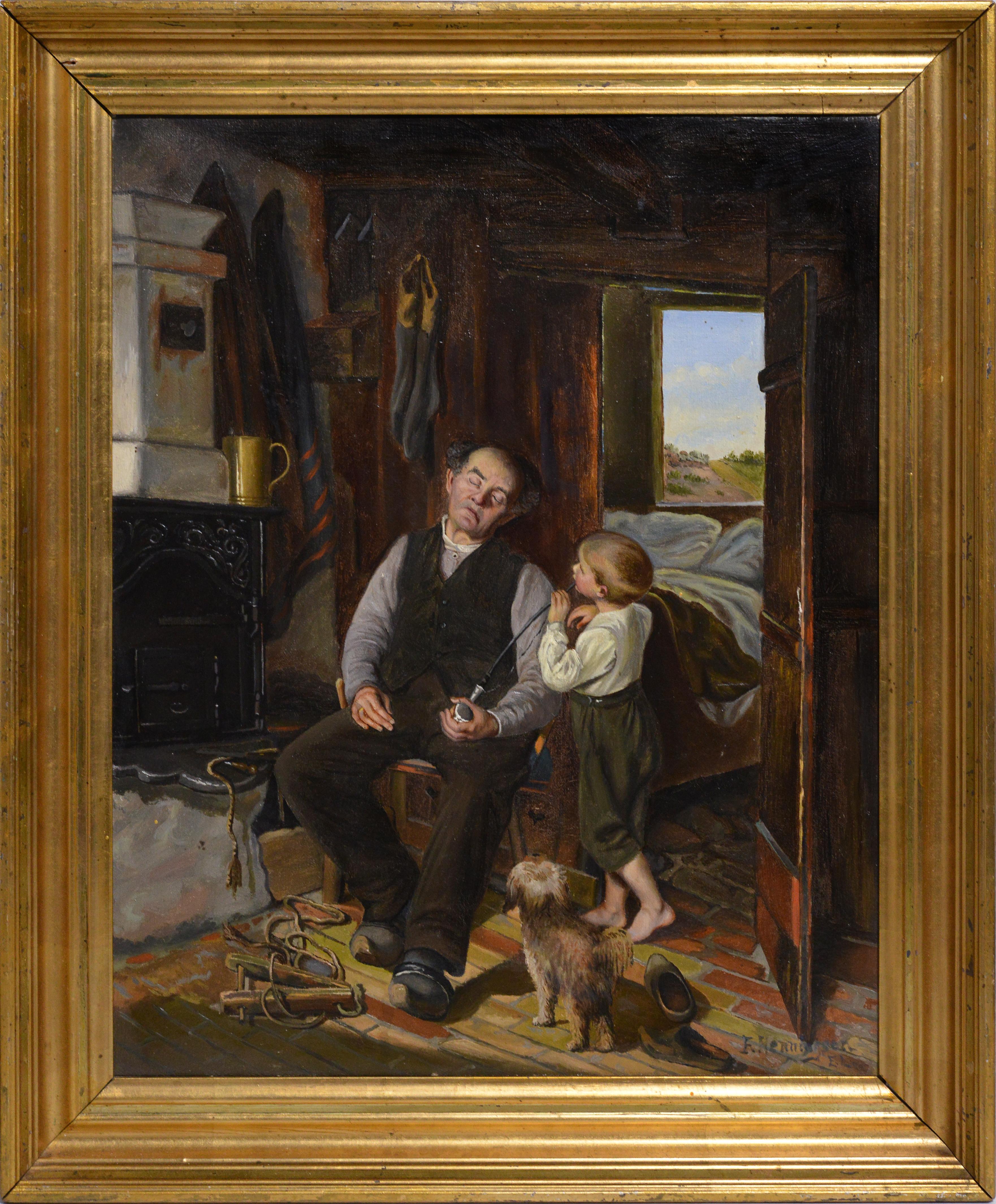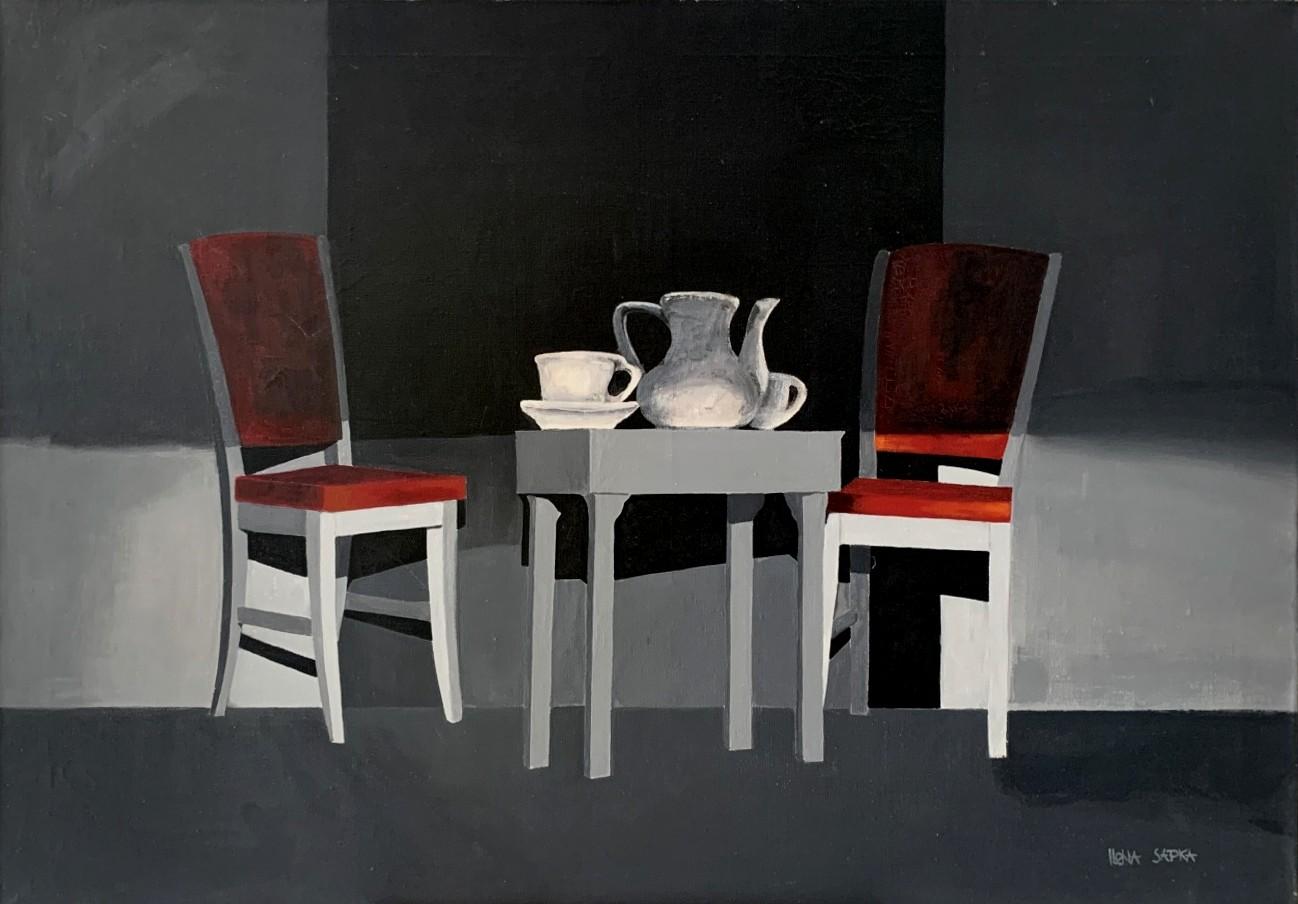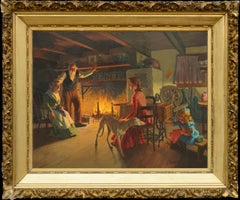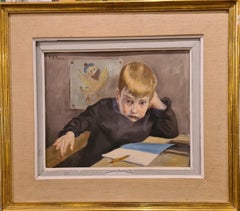
Navajo Silversmith Figurative
View Similar Items
Want more images or videos?
Request additional images or videos from the seller
1 of 8
Robert Becenti Jr.Navajo Silversmith Figurative
About the Item
About the Seller
4.9
Platinum Seller
These expertly vetted sellers are 1stDibs' most experienced sellers and are rated highest by our customers.
Established in 1986
1stDibs seller since 2014
2,526 sales on 1stDibs
More From This SellerView All
- "The Family Hearth" - Turn of the Century Cozy Interior Figurative SceneBy Charles Everett JohnsonLocated in Soquel, CACharming turn-of-20th Century interior painting that takes the viewer back to simpler times with grandmother, grandfather, mother sewing and a young girl playing with her greyhound a...Category
Early 1900s Realist Interior Paintings
MaterialsLinen, Oil
- 17th Century Genre Painting -- The Pipe SmokerBy Flemish School, 17th CenturyLocated in Soquel, CAWonderful genre painting from 18th Century of pipe smoker. Signed lower right edge with monogram "I I E". Oil paint on copper. Condition: good: minor wear/rubbing from frame's rabbet...Category
Mid-17th Century Realist Figurative Paintings
MaterialsCopper
- A Jolly Time -- German Genre Tavern Painting, 1918Located in Soquel, CAWonderful German genre painting of 17th century tavern scene in style of Franz Hals by Karl Josef Muller (German, 1864-1942) dated 1918. Signed and dated lower left corner "Karl Muller - Hamburg 1918". Condition: Good; professionally restored: Canvas restreched on new stretcher bars; five repairs made to small tears in canvas (see image); cleaned and re-varnished with UV-resistant varnish. Unframed. Image size: 39.5"H x 55"W. We have the original frame which needs some extensive repair to the gesso. Happy to include the frame with the painting as is. Karl Müller was born in Hamburg-Altstadt in 1865. His wealthy Jewish parents Abraham Müller (1832-1896), citizen of the Hanseatic city since 1869, and Henriette "Jette", b. Burchard (born 1832 Neubuckow / Mecklenburg), had a cigar factory at Spielbudenplatz 5 in St.Pauli. When Karl Müller was ten years old, next to factory and warehouse, now at Speersort 11 (Altstadt), there was also a branch in Altona-Ottensen with the address Am Felde 68. The family lived at the time at Pferdemarkt 13 (Old Town). After attending the Jewish Foundation School at the Zeughausmarkt, Karl Müller completed a three-year lithography apprenticeship. From 1886 to 1888, he studied at the Royal Saxon School of Applied Arts in Dresden with the history and decoration painter Donadini, then with Professor Hanke of the Prussian Academy of Arts in Berlin. Karl Müller's painting style was conventional-realistic and did not follow modern trends. In 1891, the oil paintings "Preparation for the Service", "In the guardroom", tattoo", "gymnastics lesson", "covert patrol” and "return from the field service exercise”, whose main motive almost always soldiers formed.In 1893, he painted the" invasion of the 76er " as a horizontal format in black and white, the painting was acquired by the Museum of Hamburg History in 1930. The disposition of Karl Müller could be classified as "kaisertreu" and "national" (Maike Bruhns) at this time - not by chance he acted with his Nicknamed "Soldatenmüller", he successfully participated in exhibitions in Berlin and Hamburg before the turn of the century. Even at this time, the frequent change of residence is striking: 1893 Papendamm 25 (Rotherbaum), 1896 Bundesstraße 9 (Rotherbaum). In 1898 he was in the Hamburg address book as a "genre and portrait painter" with the residential address 1. average 43 (Rotherbaum) out. At the age of 38, Karl married in 1903 in the Hanseatic city of the Jewish Louise Hauer (born 12.2.1872 in Hamburg), called "Lieschen". Before her marriage, she lived with her mother at Grindelberg 78. Her father, Martin Hauer (1836-1897), also born in Hamburg and was a citizen of the city since 1862, owned a factory for soap and perfume. In 1904 and 1911, the two daughters Karla and Lotte were born. 1904, the family lived at this time in the Bogenstraße 20, Karl Müller commissioned a portrait of the emigrated hamburger Henry Jones opening the same lodge in the Hartungstraße 9-11. Already at this time he might have been a member of the Hamburg Artists Association of 1832. Starting from 1908 further change of dwellings on the basis of the telephone books are comprehensible: nearly yearly the family moved and moved thereby from the Grindel quarter over Hoheluft east to Harvestehude and Winterhude. Around 1912 she moved into an apartment in Sierichstraße 156. Here, the landlord Schröder provided the artist with an area of around 45 square meters as a studio on the dry floor. But the building police criticized this use and after some disputes, the painter had to move once again with family and studio. The official telephone directory recorded as an address from 1914 to 1918 Klosterallee 20 (Harvestehude). Friedrich Jansa described Karl Müller's changed motif choice in his artist's glossary in 1912: "In recent years he has been watercolouring a lot in the Hamburg area and now mainly takes his motifs from Hamburg harbor...Category
1910s Realist Interior Paintings
MaterialsLinen, Oil
$6,000 Sale Price20% Off - Rare Early 20th C. Watercolor -- Pendennis, Captain Costigan and Miss FotheringBy Charles Edmund BrockLocated in Soquel, CAAn fine period watercolor, dated 1910, an illustration by Charles Edmund Brock (English, 1870-1938). This, from a semi-autobiographical novel written by William Makepeace Thackeray, "Pendennis", in full "The History of Pendennis: His Fortunes and Misfortunes, His Friends and His Greatest Enemy." The novel was published in monthly installments from 1848 to 1850 and published in book form in two volumes in 1849–50. Below this image is a quote from "Pendennis," Chapter VI, "Captain Costigan leaves Pendennis & Miss Fotheringay at the great window looking out into the Deans Garden". Signed lower left. Displayed in a rustic giltwood frame. Image, 8.5"H x 6.25"W. Charles Edmund Brock was a widely published English painter, line artist and book illustrator, who signed most of his work C. E. Brock. He received his first book commission at the age of 20. He became very successful, and illustrated books for authors such as Jonathan Swift, William Thackeray, Jane Austen, Charles Dickens, and George Eliot. Brock also contributed pieces to several magazines such as The Quiver, The Strand, and Pearsons...Category
1910s Realist Figurative Paintings
MaterialsPaper, Watercolor
- Cyclists in Love, Bay Area Figurative MovementBy Patricia Gren HayesLocated in Soquel, CAJoyful figurative scene with two smiling cyclists, connected with a series of colorful, swirling dots, by P. Gren Hayes (American, b. 1932). Signed and dated "© Gren Hayes 1980" at the right edge. Presented in a simple wood frame. Image size: 19.5"H x 23.5"W Patricia Gren Hayes (American, b. 1932) is a Bay Area Figurative / Bay Area Feminist Art Movement artist who studied at Winnipeg Public Art School in 1950. She received early recognition in Museum and Gallery competitions and exhibitions and was awarded a Special Education in Art recognition by the Winnipeg Museum of Fine Art, and was awarded a scholarship to the Banff College of Fine Art. Further studies were at The University of Manitoba. She was a Member of Winnipeg Free Press Sketch Club and was a Cartoonist and paste-up for a French-English bi-weekly, in Eastern Canada; She studied outdoor impressionism in New York in 1960; in 1962, attended The California College of Arts and Crafts, and in 1976 B.A., U.C. Berkeley where she studied under Elmer Bischoff, David Simpson, Joan Brown, Felix Ruvolo, Yolanda Lopez and Vincent Perez...Category
1980s American Impressionist Figurative Paintings
MaterialsOil, Fiberboard
$2,000 Sale Price20% Off - Woman reading after Henri Matisse by Claire RagueneauLocated in Soquel, CAWoman reading after Henri Matisse by Claire Ragueneau Impressionist seated woman reading a book after Henri Matisse by San Francisco artist Claire Ragueneau (American, 1901-1971). Cl...Category
1950s Impressionist Figurative Paintings
MaterialsIllustration Board, Oil
You May Also Like
- Donald Duck and Le Petit Ecolier, Early 20th Century Oil on Board.Located in Cotignac, FREarly 20th century oil on board portrait of a young schoolboy 'Le Petit Écolier', with Donald Duck, by Pierre Villain (French, 1880-1950). Signed top ri...Category
Early 20th Century Realist Figurative Paintings
MaterialsOil, Board
$990 Sale Price25% Off - Oil Painting Called "The Young Artist" by Swedish Johan Christoffer BoklundLocated in Stockholm, SEIntroducing a captivating oil painting by Johan Christoffer Boklund (1817-1880). The artwork depicts a young boy practicing his painting skills. Seated beside him is a wooden horse t...Category
19th Century Realist Interior Paintings
MaterialsCanvas, Oil, Board
- The Old Stone Stairway By Düsseldorf Artist Ferdinand FagerlinLocated in Stockholm, SEThis oil painting called The Old Stone Stairway by Ferdinand Fagerlin offers an intimate glimpse into a quiet interior space, where the stillness of...Category
Late 19th Century Realist Interior Paintings
MaterialsOil, Board
- Realist Italian painter - Late 19th century figure painting - Portrait GirlLocated in Varmo, ITItalian painter (19th-20th century) - Portrait of a girl. 56 x 35 cm without frame, 69 x 49 cm with frame. Antique oil painting on cardboard, in a wooden frame (some cracks). Cond...Category
Late 19th Century Realist Figurative Paintings
MaterialsCardboard, Oil
$990 Sale Price25% OffFree Shipping - "The Mandolin Serenade", 19th Century Watercolour on Cardboard by Giménez MartínLocated in Madrid, ESJUAN GIMÉNEZ MARTÍN Spanish 1855 - 1901 THE MANDOLIN SERENADE signed & located "Gimenez-Martin, Roma" lower left watercolour on cardboard 21-1/4 x ...Category
1880s Realist Figurative Paintings
MaterialsWatercolor, Cardboard
- "Lady in yellow", 19th Century oil on panel by Rogelio de Egusquiza y BarrenaBy Rogelio de Egusquiza y BarrenaLocated in Madrid, ESROGELIO DE EGUSQUIZA Y BARRENA LADY IN YELLOW signed "R. Egusquiza" (lower right) oil on panel 28-5/8 X 20-3/4 inches (72.5 X 52.7 cm.) framed: 32-5/8 X 24-3/4 inches (82.5 X 62.5 cm.) Rogelio de Egusquiza y Barrena (1845 – 10 February 1915) was a Spanish painter, known for his friendship with the German composer Richard Wagner, whose works he helped make familiar in Spain He was born in El Astillero, into a well-to-do family. He studied in Madrid and with Léon Bonnat at the École des Beaux-Arts in Paris. In 1868, after travelling and participating several times in the National Exhibition of Fine Arts, he returned to Paris and settled there. At first, he painted historical scenes, but later turned to genre scenes and portraits in the Academic style. Following the death of Marià Fortuny, he moved to Rome at the invitation of the Madrazos, Raimundo and Ricardo, taking Fortuny's place at their studio through 1875 and attending classes at the Spanish Academy in Rome. He heard Wagner's music for the first time in 1876, after returning to Paris. Three years later, he travelled to Munich to hear a performance of The Ring of the Nibelungen. His enthusiasm for what he heard led him to go to Bayreuth, where he introduced himself to Wagner and became his friend. In the following years, he and Wagner got together again several times; in Venice (1880), Berlín (1881) and Bayreuth (1882); where he was a guest at the premiere of Parsifal. After his first meeting with Wagner, he decided to devote his career to doing works on Wagnerian themes; mostly portraits of the characters rather than specific scenes. During his visits to Germany, he also created portraits of Arthur Schopenhauer (posthumous) and King Ludwig II...Category
1880s Realist Interior Paintings
MaterialsOil, Panel
